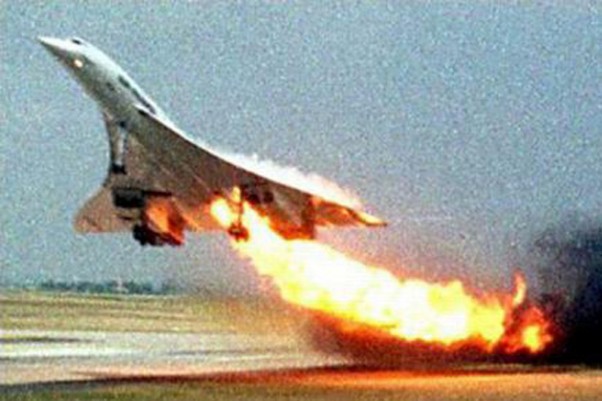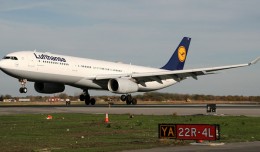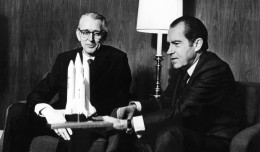1909: French aviator Louis Blériot makes the first crossing of the English Channel with a heavier-than-air machine. The 37 minute flight from Calais to Dover was completed aboard Blériot’s own Blériot XI, a biplane constructed mainly of oak, poplar and cloth and powered by a 25hp engine. The effort was made in response to a challenge published by London’s Daily Mail newspaper. In addition to a £1000 prize, the feat earned Blériot immediate fame, and his company went on to produce over 800 planes, including fighters used by the Allies in World War I.
1932: Paul J. Weitz, NASA astronaut on Spacelab 2 and commander of the first Space Shuttle Challenger mission (STS-6), is born in Erie, Pennsylvania.
1973: the Soviet Union launches Mars 5, the fifth of seven of probes sent to the red planet in the 1960s and 70s. Mars 5 would reach Mars in February of 1974, where it would transmit about 60 photos back to Earth before losing pressurization.
1975: The NASA space probe Viking 1 snaps the famous “Face on Mars” photo.
1984: Cosmonaut Svetlana Savitskaya becomes the first woman to perform a space walk, floating around the Salyut 7 space station for over 3 1/2 hours.
2000: Air France Flight 4590, a chartered Concorde (F-BTSC) aircraft scheduled to fly a German tour group from Paris to meet a cruise ship in New York, crashes immediately after takeoff from Charles de Gaulle International Airport in Paris, killing all 109 passengers and 4 people on the ground. The accident would mark the beginning of the end of supersonic commercial flight; less than three years later, all Concordes would be retired.







